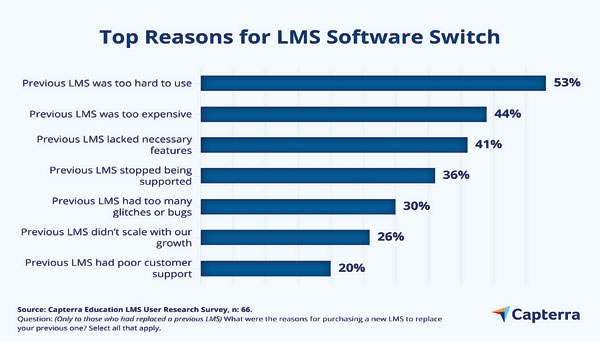Adaptation of EdTech in the New “Normal“& Beyond: Simplicity, Integrated Platforms and Emergency Learning Plans
View(s):With Covid-19 continuing to impact our everyday life, the schooling system across the country is gearing up for an e-learning based education model once again. Regardless, schools are now much more prepared than they were when the first wave hit us in March 2020. It is safe to say that ‘Education Technology’ (EdTech) is here to stay, even after an affordable cure/ vaccine for the virus becomes available globally.

Chaminda V Silva
Educators/ teachers in Sri Lanka have done an excellent job in adapting to the new normal of technology-based teaching, despite most having limited prior experience on the subject matter. In such a context, three key factors will help drive the adaptation of EdTech platforms in developing nations such as Sri Lanka:
1. Simplicity is crucial: Educators don’t want complex EdTech/ e-learning platforms, and the effects of complexity is compounded in Sri Lanka
2. One Integrated platform: Avoid the confusion/ inefficiencies of accessing multiple platforms
3. Emergency Learning Plan (ELP) for schools: Beyond the pandemic era
01. Simplicity is crucial
Wherever you are in the world, simplicity for an EdTech platform plays a critical role. The perfect Learning Management System (LMS)interface is intuitive and user-friendly whoever the user and should require minimal effort to learn. This is illustrated by a recent survey conducted by Capterra on 66 participants involving schools and universities, in which the majority (53%) of participants who switched to an LMS stated that being “hard to use’was the primary cause for a switch (1).
The findings were similar even before Covid as well. In a 2016 study, the Brandon Hall Group, a Human Capital Management (HCM) research and advisory services firm, found that 44% of institutionsusing an LMS are thinking about replacing them primarily due to the search for “a better user experience“,closely followed by the requirement for a “better administrative experience”(2).
Further, in a 2014 survey in Norway, which gauged’”teachers’digital competence and experiences of ICT revealed that c. 52% of teachers fell into the categories of either unable to perform/ needed help to “use collaborative editing tools online together pupils”(3).
The effects of complexity are compounded in Sri Lanka
While LMS platforms are multi-faceted, most educators in Sri Lanka have mainly utilized these platforms for a set of core features. As per our discussions with educators/ administrators from leading private schools, the set of core features utilized include; conducting interactive video classrooms, assigning homework to students, grading homework/ quizzes and to provide feedback to the students.
While some educators may have used adjacent features, the successful evolution of LMS platforms in Sri Lanka wasprimarily driven by the above, along with the simplicity, –ease of use and the ability to keep control of the virtual classroom. The mantra is for technology to act as an enabler for an educator, allowing the educator to focus on his/ her core strength, which is teaching. However, during the pandemic, for a lot of educators, the complexity surrounding EdTech platforms have been more of a hindrance in solving the current education challenge.
Currently, there isa multitude of platforms in the market, offering varying features boasting high-levels of complexity and sophistication. Powerful off-the-shelf technology products such as Google Classroom (GCL) and MS Teams, are highly commendable, coming to the rescue of the educators around the world during the pandemic.

Gamika Seneviratne
Plain vanilla versions of these products are offered free of cost for schools, which has enabled educators to minimize the disruption to school education. These products have their own unique hierarchy and structure, perhaps in its existing avatar well suited for senior classes (i.e. grade 12) in the western/ developed world, where higher levels of technology savviness, and higher accessibility to a relatively sophisticated smart device among educators are the norm.
Educators in developing nations require more simplicity, more user-friendly EdTech platforms that can be accessed even with a low-cost smart device.
02. One Integrated platform
Naturally, all large scale institutional platforms that have been repurposed for Learning Management Systems (i.e. MS TEAMs, Google Classroom) offer their own high functionality API’s for a purpose. That is toallow more niche products to tailor their powerful platforms to more specific use cases and to achieve a better product-market fit.
The ability to execute criticalfunctions of an LMS via one integrated platform (vs multiple platforms), adds to the simplicity and easiness- to- use for an educator, which is likely to be a primary variable to drive adaptation. The challenges of having to access multiple platforms arenumerous and can create confusion resulting in inefficiencies. Some of the key issues faced are;
Using multiple platforms would require the educator to go through multiple facets of training and understand the varying nuances, creating a hurdle for a less IT savvyperson to keep abreast of
The possible requirement to manually repeat the same task, in multiple platforms creates significant inefficiencies (i.e. tasks such as updating of the student lists/ roster, sending notifications, calendar updates, submitting and grading homework assignments etc.)
The requirement to coordinate with different support personnel from the respective platforms vs having a Single Point of Contact (SPoC) in an integrated model
To a lesser extent, having to remember multiple credentials to log-in, is an additional burden (especially when shared smart devices are used)
EdTech platforms need to be aligned to the requirements of educators by integrating essentialfeatures in one unified platform in a simple and easy- to- use manner.
03. Emergency Learning Plan for schools
One year ago, even the most experienced educators would not have been able to plan for the schooling disruptions in 2020 caused by Covid-19.While the requirement for emergency learning for schools came up in 2019 due to the disruption caused by the Easter attacks in Sri Lanka, the urgency tapered off, as fortunately the disruption to schooling was limited and was well managed by the educators along with the administrators.
Now, the Covid-19 pandemic has magnified the requirement for an Emergency Learning Plan (ELP) for every school, and it is time for educators to perhaps look beyond the pandemic era and think of an on-going Emergency Learning Plan solution as a continuity procedure. During an emergency, the ability for the school/ educators to instantaneously connect with the parents/ students would indeed help mitigate the level of ambiguity surrounding an unforeseen event and also manage the anxiety levels among the respective schooling community.
Further, in the event the school premises are not physically accessible beyond an acceptable period, the ability for the school to get the learning back on track within a few days would be key to minimize disruption to education.
Accordingly, educators need to select the best suited Emergency Learning Plan program for their respective school. The sophistication level of the technology and features of the Emergency Learning Plan should be a function of the school’s requirements and the budget.
In summary, the EdTech platforms need to be customized and simplified to meet the requirements of educators in developing nations such as Sri Lanka: simplicity, control, higher integration among platforms are some of the key factors driving adaptation among users. Further, it is timely for educators to look beyond the pandemic era and think of a permanent Emergency Learning Program solution as a continuity procedure based on the schools’ requirements.
(Chaminda V.Silva is the Managing Director and GamikaSeneviratne is the Head of Product at Yara Technologies (Pvt) Ltd ["Yara"], which owns and operates the “Talkative Parents”EdTech Platform.
Talkative Parents connects educators, teachers, parents and students via one integrated solution consisting of a Communication Platform, e- Learning/ LMS , School Fees Payments and Document management. The platform has over 7,000 active users including leading private schools such as Bishop’s College and S. Thomas’Preparatory school.)

References:
(1) Capterra: https://www.capterra.com/learning-management-system-software/user-research/
(2) HCM: https://www.skillbuilderlms.com/10-must-have-lms-features/
(3) New “teachers’digital competence and experiences of ICT in teacher education programmes in Norway: https://www.researchgate.net/figure/Teachers-self-assessment-of-own-basic-digital-skills-Responses-to-the-question-To_fig1_336922501
Other References:
The Impact of Technology: Student Engagement and Success:
https://techandcurriculum.pressbooks.com/chapter/
Teacher Engagement with Technology in Everyday Classroom Learning and Teaching: https://www.researchgate.net/publication/317576093_Teacher_Engagement_with_Technology_in_Everyday_Classroom_Learning_and_Teaching
New teachers’ digital competence and experiences of ICT in teacher education programmes in Norway
https://www.researchgate.net/publication/336922501_New_teachers’_digital_competence_and_experiences_of_ICT_in_teacher_education_programmes_in_Norway
- Chaminda V.Silva and Gamika Seneviratne


